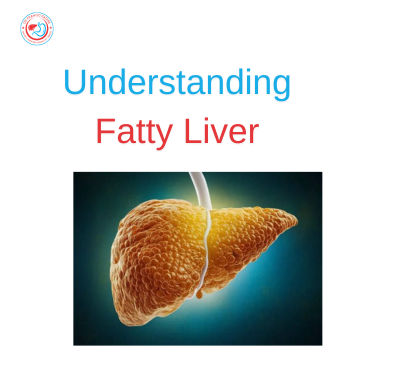Fatty liver disease, medically known as hepatic steatosis, is a condition characterized by excessive fat accumulation in liver cells. While a small amount of fat in the liver is normal, excessive fat can lead to inflammation, liver damage, and serious health complications. With lifestyle changes and early intervention, fatty liver disease can often be managed or even reversed.
Types of Fatty Liver Disease
- Non-Alcoholic Fatty Liver Disease (NAFLD): Occurs in individuals who consume little to no alcohol. It’s the most common form and is often associated with obesity, diabetes, and metabolic syndrome.
- Alcoholic Fatty Liver Disease (AFLD): Caused by excessive alcohol consumption, leading to fat buildup in liver cells.
Causes and Risk Factors
Non-Alcoholic Fatty Liver Disease (NAFLD)
- Obesity: Excess body weight increases fat accumulation in the liver.
- Type 2 Diabetes: Insulin resistance contributes to fat buildup.
- High Cholesterol and Triglycerides: Elevated lipid levels can exacerbate liver fat accumulation.
- Sedentary Lifestyle: Lack of physical activity promotes fat storage.
- Poor Diet: High intake of refined carbohydrates and saturated fats.
Alcoholic Fatty Liver Disease (AFLD)
- Excessive Alcohol Consumption: Alcohol metabolism produces substances that can damage liver cells and promote fat accumulation.
Symptoms
Fatty liver disease often presents no symptoms in its early stages. As the condition progresses, individuals may experience:
- Fatigue
- Discomfort or pain in the upper right abdomen
- Unexplained weight loss
- Weakness
Advanced stages can lead to liver inflammation (steatohepatitis), fibrosis, cirrhosis, and liver failure.
Diagnosis
Diagnosis typically involves:
- Medical History and Physical Examination: Assessing risk factors and physical signs.
- Blood Tests: Elevated liver enzymes may indicate liver inflammation.
- Imaging Studies: Ultrasound, CT scan, or MRI to detect fat in the liver.
- Liver Biopsy: In some cases, a tissue sample is taken to assess liver damage.
Treatment Options
Lifestyle Modifications
- Weight Loss: Losing 7-10% of body weight can significantly reduce liver fat.
- Healthy Diet: Emphasize fruits, vegetables, whole grains, lean proteins, and healthy fats. Limit sugar, refined carbs, and saturated fats.
- Regular Exercise: Aim for at least 150 minutes of moderate-intensity exercise per week.
- Limit Alcohol Intake: Especially important for those with AFLD.
Medications
While no specific medications are approved for fatty liver disease, certain drugs may be prescribed to manage associated conditions:
- Insulin Sensitizers: Such as metformin, to improve insulin resistance.
- Lipid-Lowering Agents: To manage cholesterol and triglyceride levels.
- Vitamin E: An antioxidant that may reduce liver inflammation in non-diabetic individuals.
Emerging Treatments
Recent studies have shown promising results for medications like semaglutide in treating non-alcoholic steatohepatitis (NASH), a severe form of NAFLD. Semaglutide, traditionally used for type 2 diabetes, has demonstrated significant reductions in liver fat and inflammation.
Prevention Strategies
- Maintain a Healthy Weight: Regular exercise and a balanced diet.
- Monitor Blood Sugar and Lipid Levels: Regular health check-ups to manage diabetes and cholesterol.
- Limit Alcohol Consumption: Adhere to recommended guidelines.
- Avoid Unnecessary Medications: Some drugs can exacerbate liver damage.
Fatty liver disease is a growing health concern, but with early detection and proactive lifestyle changes, it can often be managed effectively. Regular medical check-ups, a balanced diet, physical activity, and moderation in alcohol consumption are key to maintaining liver health. If you suspect you may be at risk, consult a healthcare professional for appropriate evaluation and guidance.
FAQs
Q1: Can fatty liver disease be reversed?
Yes, especially in the early stages. Lifestyle changes like weight loss, healthy eating, and regular exercise can reverse fat accumulation in the liver.
Q2: Is fatty liver disease serious?
While early stages may be benign, progression can lead to serious conditions like cirrhosis and liver failure if left unmanaged.
Q3: Who is at risk for fatty liver disease?
Individuals who are overweight, have type 2 diabetes, high cholesterol, or consume excessive alcohol are at higher risk.


